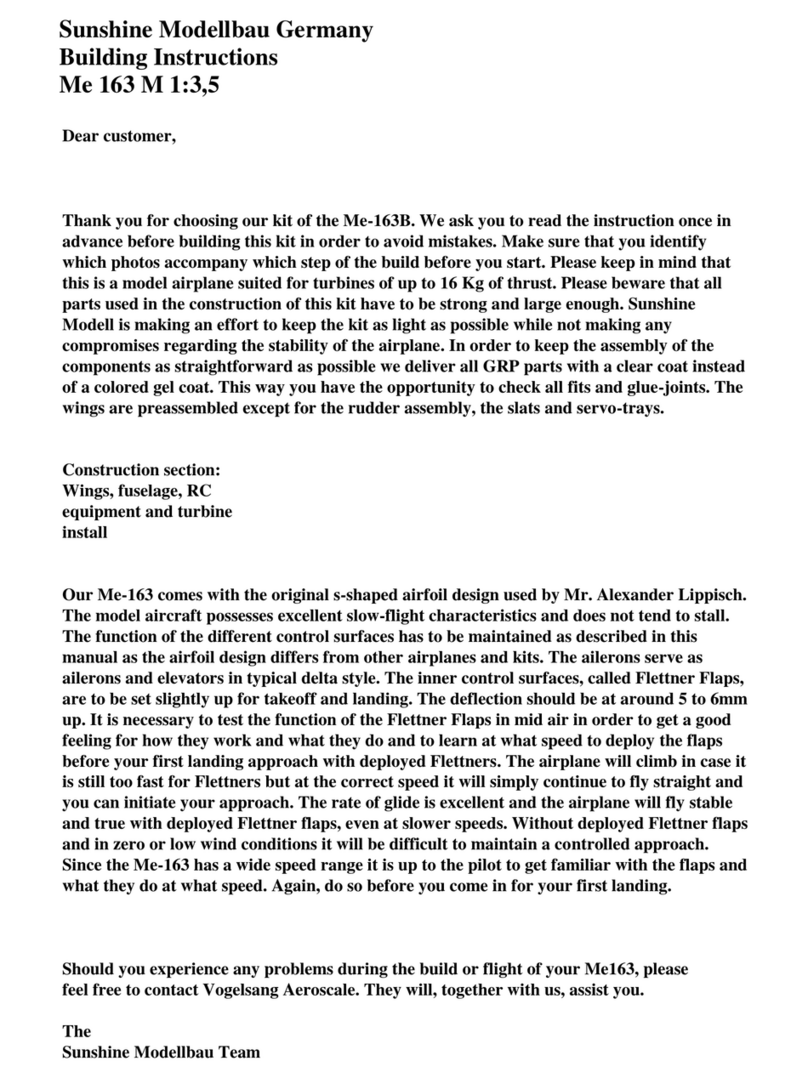The wings
Basic functions:
The outer rudders serve as elevons/delta. The inner rudders, called Flettner flaps, are only to
be used in combination with the elevator function and as trim flaps, NOT traditional landing
flaps.
The ailerons are hinged by a carbon rod. There is a wooden bracket which serves as a bracket
which needs to be installed in the mid-section between the ailerons and flettner flaps. You
need to cut an opening underneath the wing in order to be able to position and install said
wooden bracket and glue it in place using epoxy once everything is aligned correctly.
The gap left and right of the aileron will be filled up with balsa in order to keep the aileron
from sliding sideways.
Cut out the flettner flaps along the visible lines and install the guide-tubing for the rod on the
root-rib side of the flettner flap using epoxy. Test fit before applying glue. Once this assembly
has cured you can install the wooden bracket that holds the other end of the flettner rod. You
can at this point still pull out the rod at the root rib end of the wing, the flettner is still
detachable. You want to secure this rod later on, of course, once everything is painted and
installed.
You can, of course, use standard pin-hinges. In that case you will need to fill up the leading
edge of the flaps and trailing edge of the wing using balsa.
Fabricate servo brackets according to your preferences. The position is predetermined by the
rudder horn brackets inside the ailerons.
Important
Use utmost caution when installing the rudder hinges and brackets. Do use the included
wooden brackets and the according axle rods.
Wing Joint
Start by gluing the wooden “root” ribs into the fuselage’s wing pockets. Transfer the location
of the holes of the wings to the fuselage and fit everything to size. Once the wings are
finished slide the wing tube in place, using the former that holds the wing assembly (make
sure to sand the inside of the fuselage where surfaces meet beforehand). Now use an exact
incidence meter and make sure that everything is aligned (making sure that both wings have
the same incidence). Tack the former in place using CA. Now take off the wings and glue the
former in place using epoxy.
Now install the wing bolts that hold the wings down. Install the bolts into the wings and mark
where they meet the fuselage. You can now install the counterpart to the bolt.























